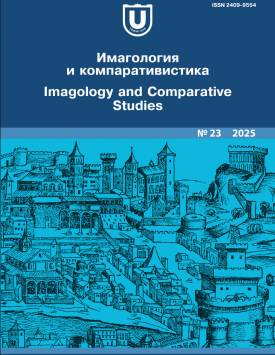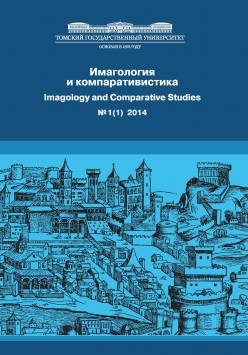The doppelgänger topos through a quantitative comparative lens
The paper discusses the quantitative comparison of the doppelganger topos by the elementary methods of graph theory. The range of selected texts ensured a large sample size to analyze the doppelganger poetics: Adelbert von Chamisso’s Peter Schlemihl’s Miraculous Story, Ernst T.A. Hoffmann’s Die Doppeltganger, Nikolai Gogol’s The Nose, Edgar A. Poe’s “William Wilson”, Theophile Gautier’s “The Two Actors for One Role”, Fyodor Dostoevsky’s The Double: A Petersburg Poem, Hans Ch. Andersen’s The Shadow, Fyodor I. Dostoevsky’s “The Devil. Ivan Fyodorovich’s Nightmare” (a chapter from The Brothers Karamazov), Henri A.R. Guy de Maupassant’s “The Horla”, Robert L. Stevenson’s The Strange Case of Dr. Jekyll and Mr. Hyde, Henry James’s “The Jolly Corner”, Joseph Conrad’s “The Secret Sharer”, and Vladimir Nabokov’s Despair. The study consisted of three stages. Firstly, the authors determined the features of the sampled texts to be quanitfied. Secondly, they built incidence matrices for each of the four specified groups of the doppel-ganger attributes: psychic attributes of the doppelganger topos, doppelganger physical manifestations, elements of biography of the doppelganger topos, and poetics of Gothic mystery associated with a doppelganger. The matrices demonstrated which texts contain which doppelganger attributes to calculate the degree of similarity between texts for each group of attributes. Thirdly, based on the full list of attributes for all the four groups, the authors analyzed the similarities and differences between the texts to assess the results in terms of the history and theory of literature. The quantitative method, having served as a kind of trigger for literary analysis, yielded high-quality poetological results. 1) The vivid and functional imagery of “The Horla” and Stevenson’s novella largely determined the genre of ’multiple personality’ thriller. 2) The Double, “The Secret Sharer” and “The Two Actors for One Role” apparently provided literature with fairly universal doppelganger imagery that turned out to be most adaptive for various artistic tasks. 3) High results of “The Secret Sharer” show that the doppelganger in the literature of the early 20th century no longer needed to be fantastic and “monstrous.” 4) Dostoevsky’s The Double appeared to be the most typical due to the total number of doppelganger attributes and its strong similarity with the other selected texts. The authors declare no conflicts of interests.
Keywords
doppelganger, mathematical methods in literary criticism, comparative studies, simplicial complexesAuthors
| Name | Organization | |
| Golovacheva Irina V. | St. Petersburg State University | igolovacheva@gmail.com |
| Zhuravlev Mikhail Ye. | St. Petersburg State University | myezhur@gmail.com |
References

The doppelgänger topos through a quantitative comparative lens | Imagologiya i komparativistika – Imagology and Comparative Studies. 2025. № 23. DOI: 10.17223/24099554/23/1
